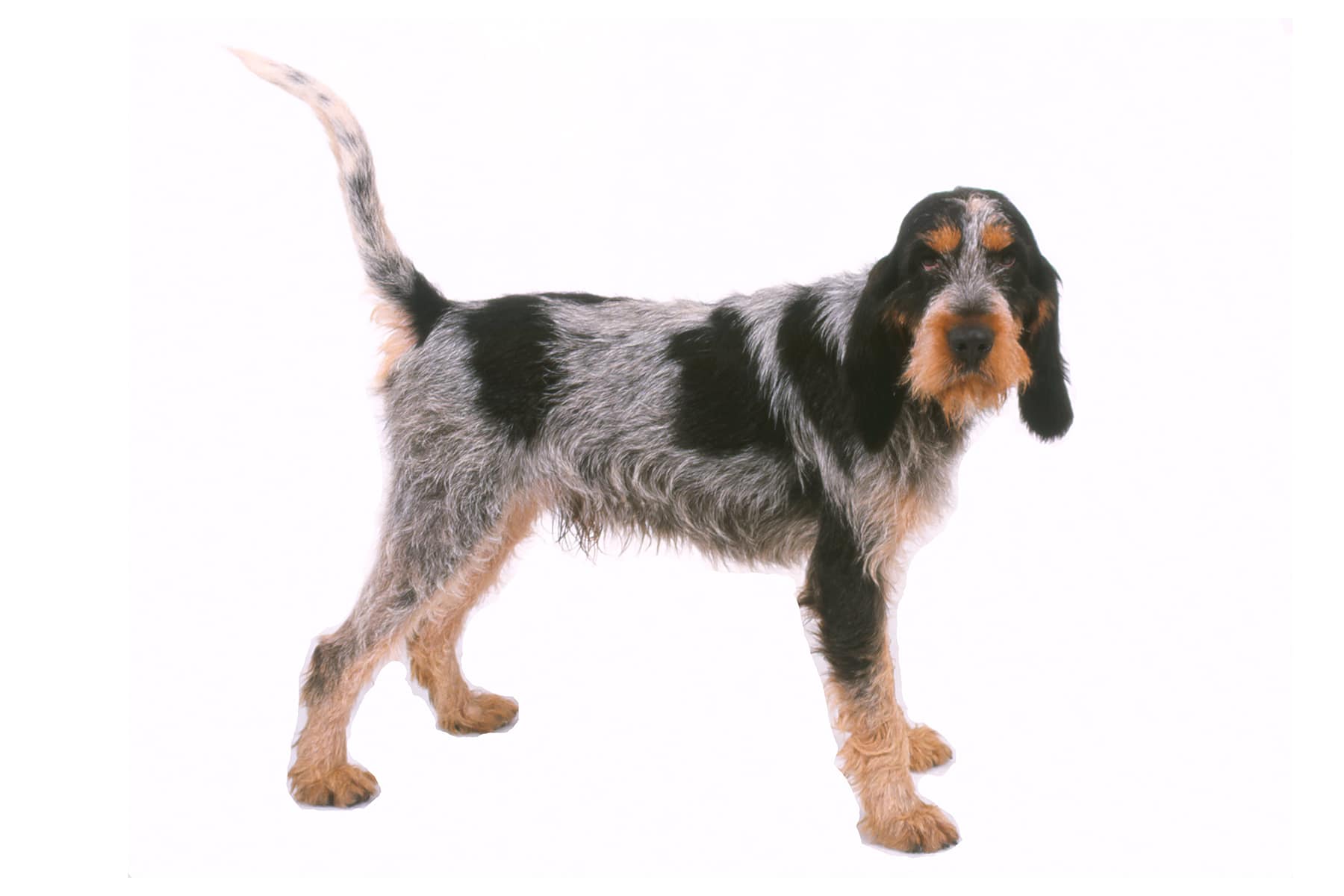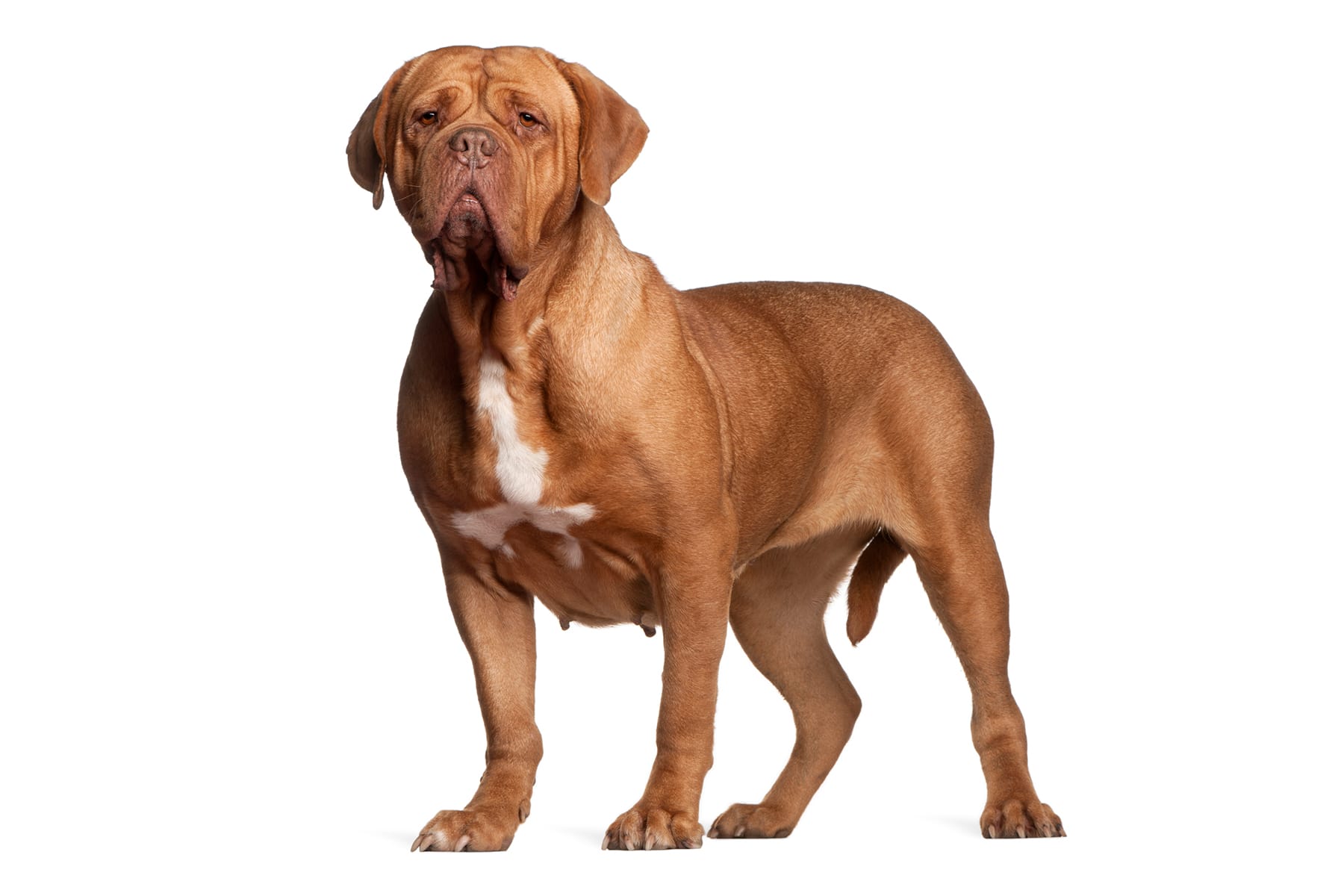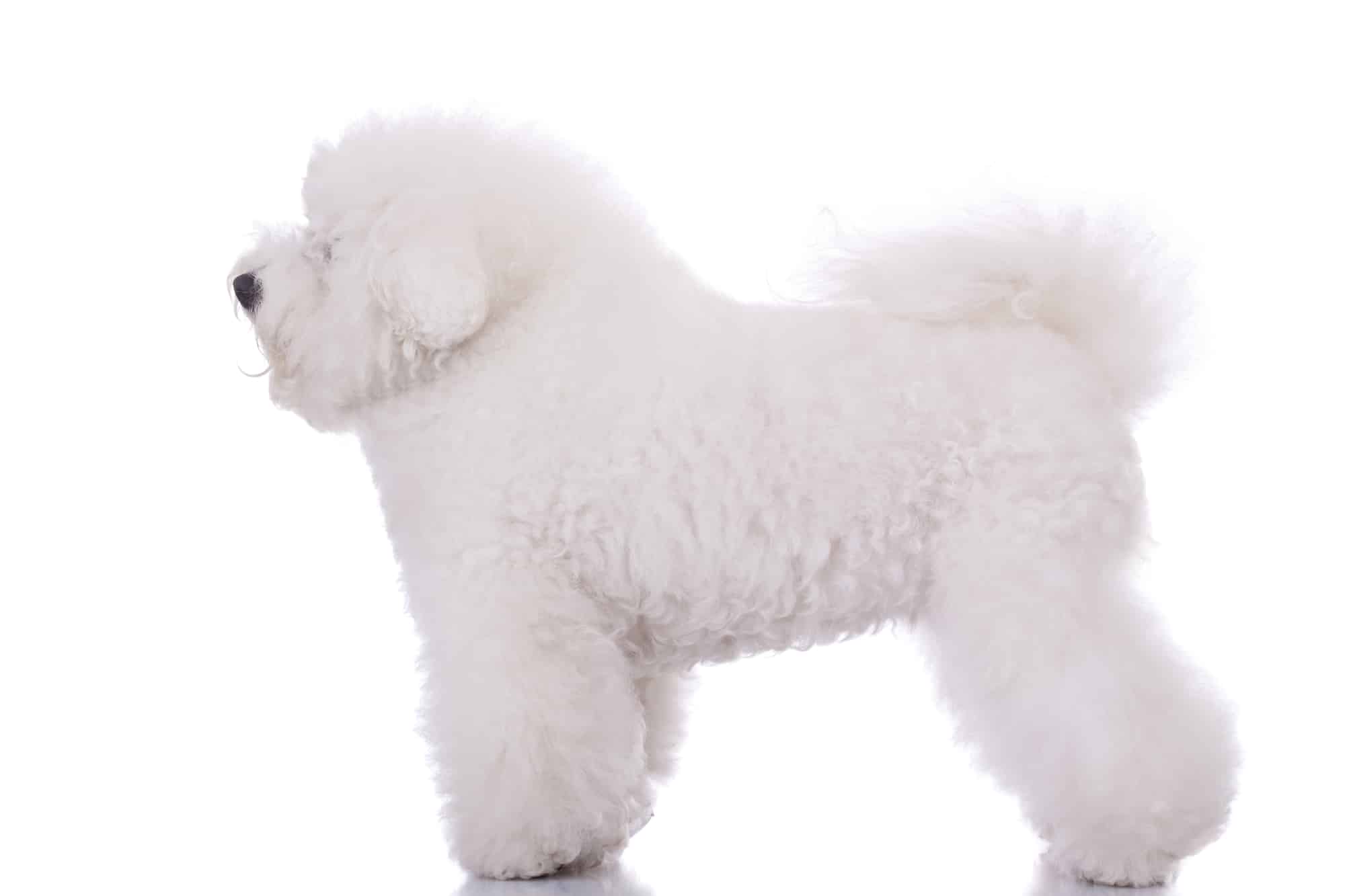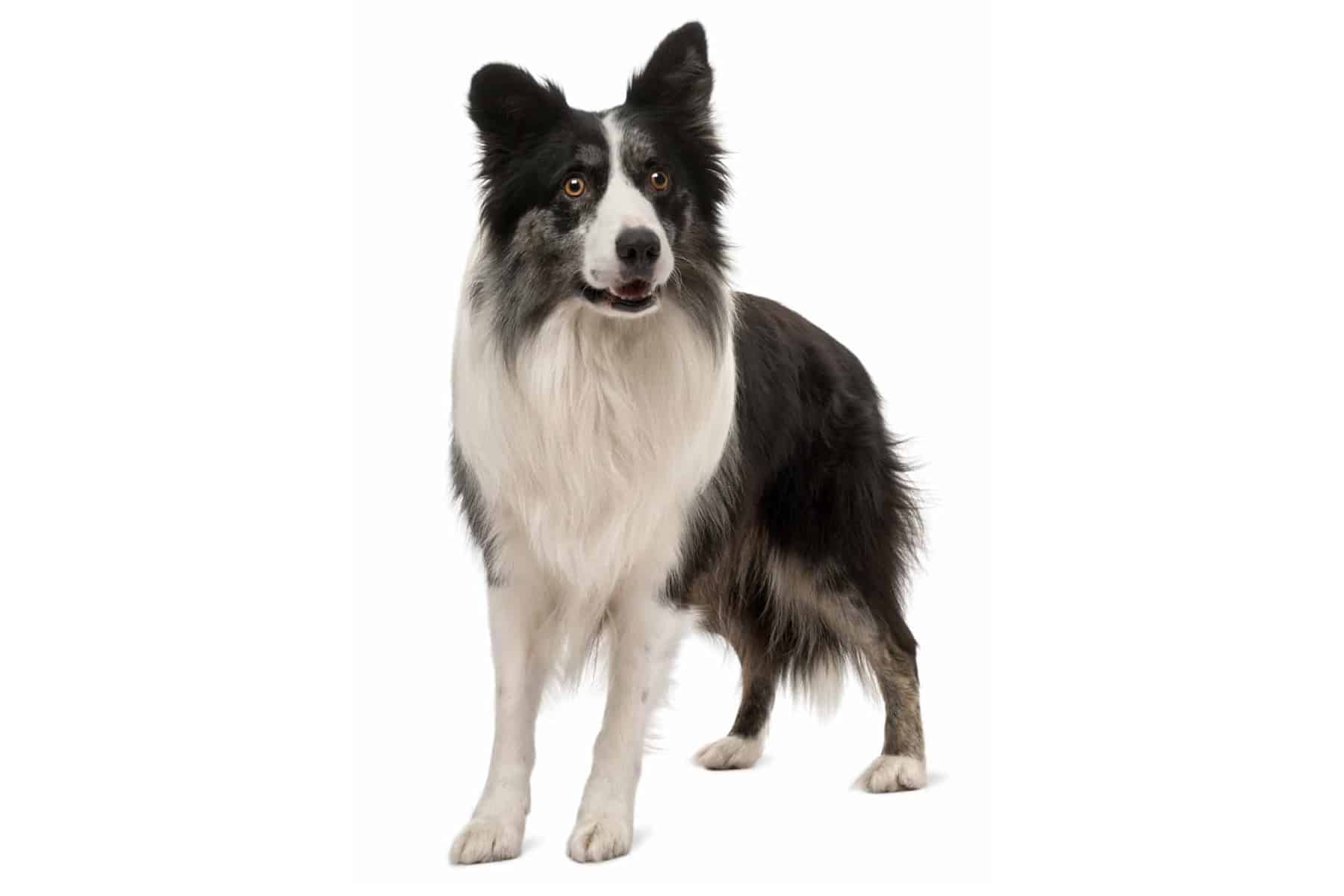Australian Cattle Dog (Blue Heeler)
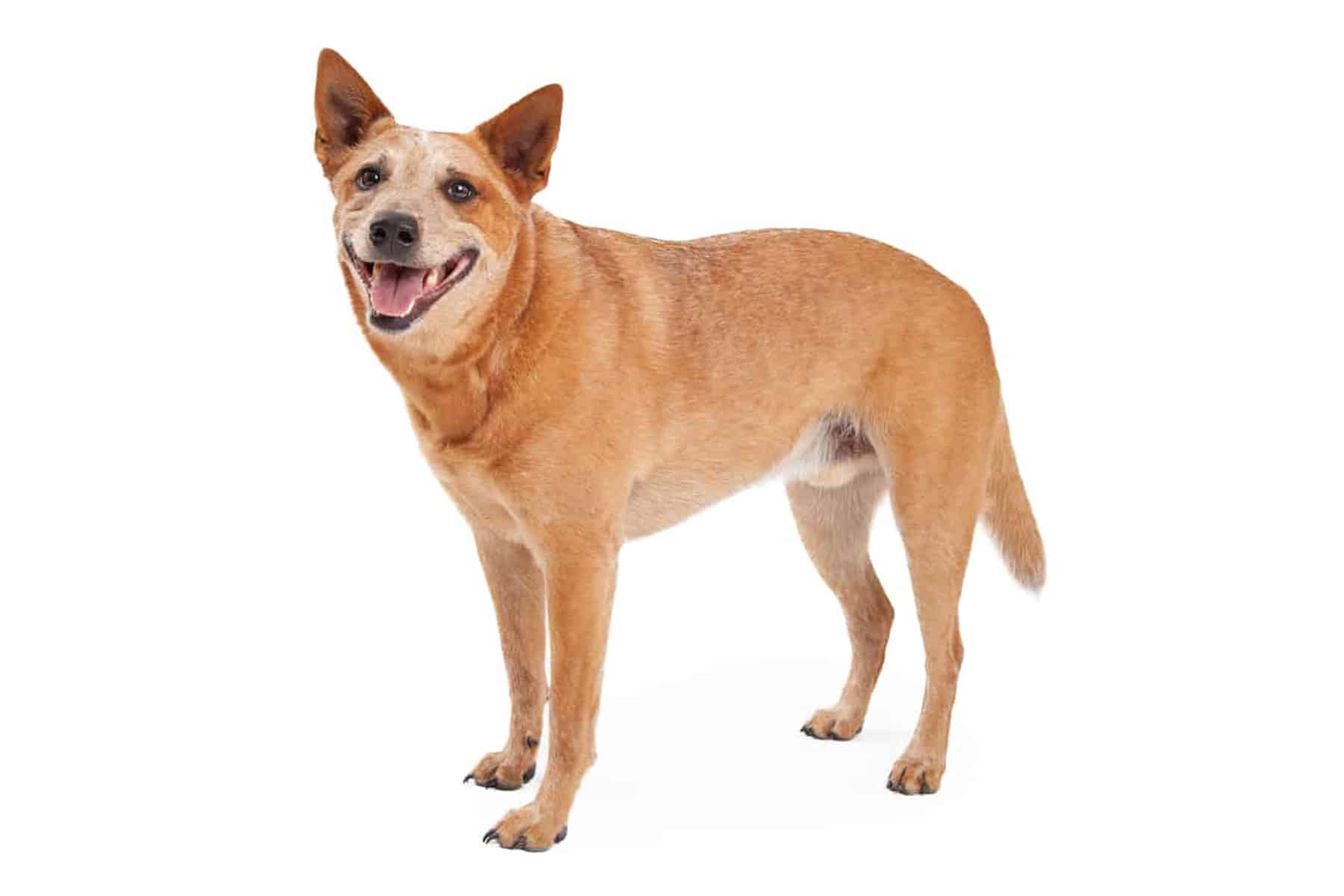
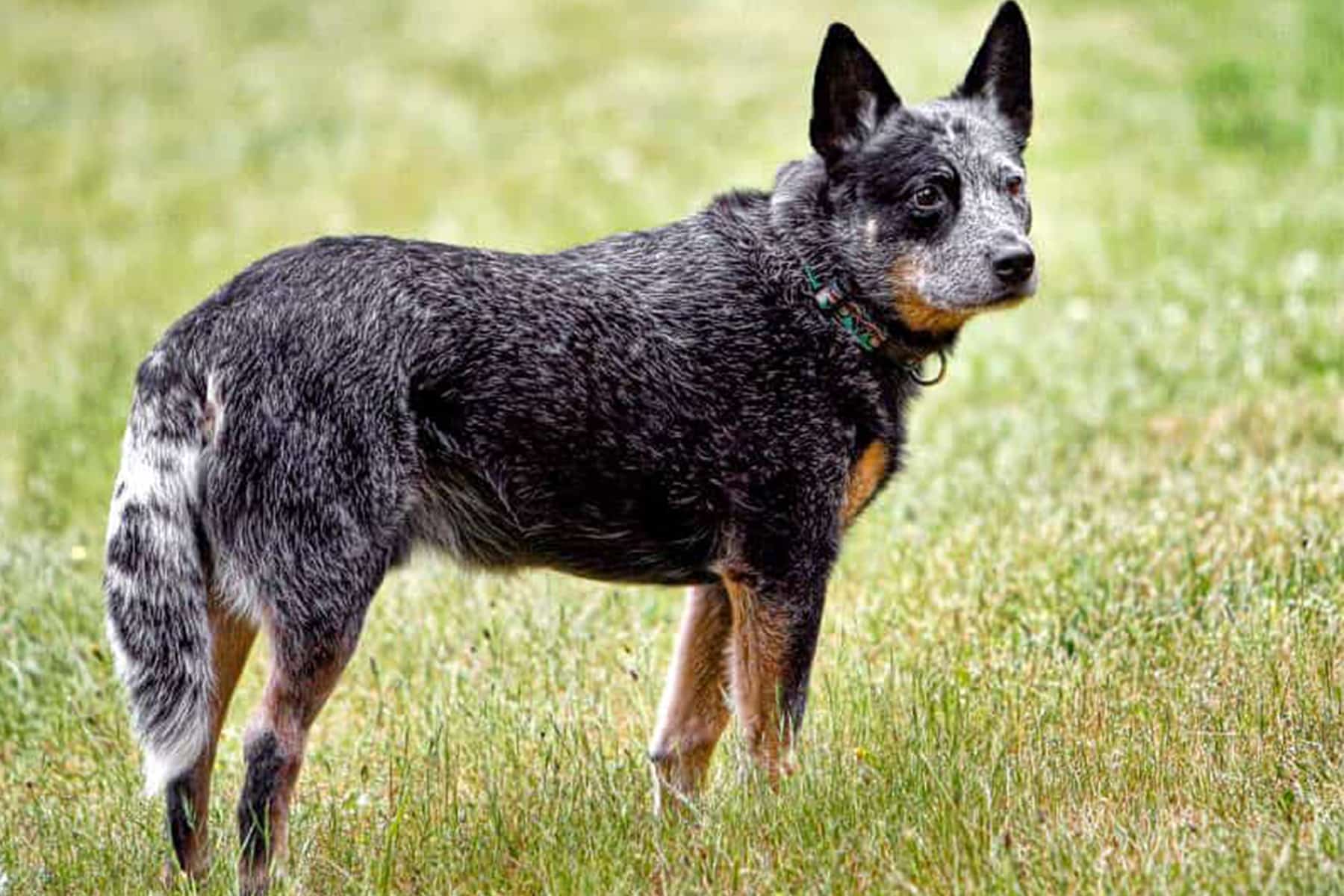
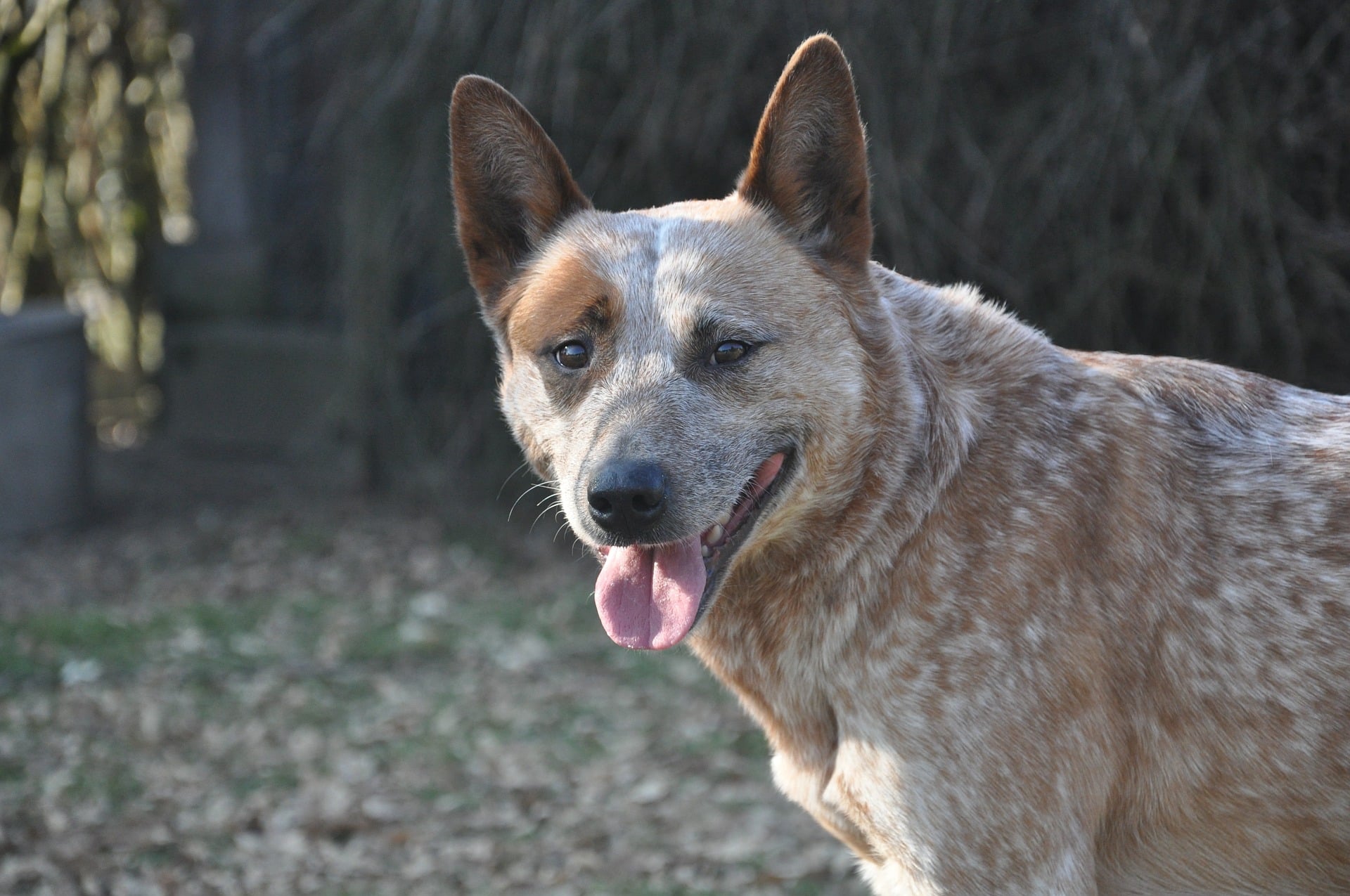
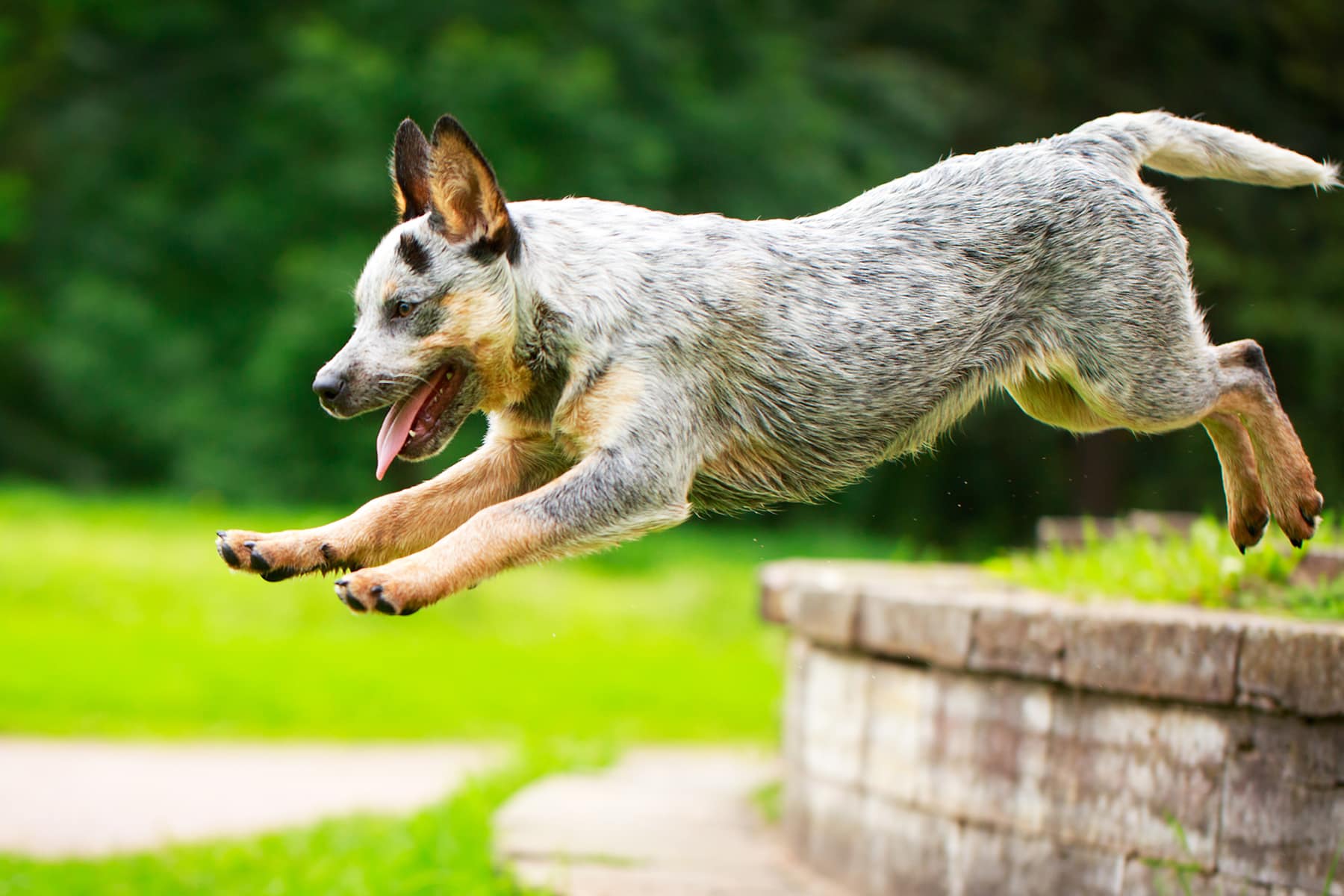
Temperament:
The Australian Cattle Dog (Blue Heeler) is one of the most popular dog breeds. It is a reliable herding and herding dog and a faithful and loyal companion.
With its strong build and patterned coat, it is particularly attractive. His self-confidence and intelligence make him a demanding four-legged friend. He belongs in experienced hands.
Characteristics
The Australian Cattle Dog is a medium-sized dog. It is strikingly compact and strongly built. The coat is smooth with a short, dense undercoat.
It differs from other dog breeds by its characteristic coat colors. These are due to a genetic defect. The Blue Merle Collie was crossed into the breed. There are the color variants blue spotted, spotted, red spotted and red spotted.
At birth, the puppies have a white coat. Sometimes there are barely visible patches. The typical markings only develop later.
The strong Cattle Dog is exceptionally intelligent, self-confident, attentive and courageous. He shows a strong sense of duty. In keeping with its ancestry, it has a pronounced herding and protective instinct. Its strong urge for activity and exercise is also striking.
This bundle of energy needs plenty of activity to keep it happy. This should be meaningful and varied. It should do justice to his intelligence and his urge to move. It should be adapted to his age and constitution.
Intelligence games, dog sports and guarding tasks are most suitable. Possible choices are: Obedience, agility, flyball, swimming training, dog frisbee, dog dancing.
This dog is very intelligent and people-friendly. That is why he is happy to help with the therapeutic treatment of mentally handicapped people. It can also be used to rescue people in distress.
The adult four-legged friend has a pronounced following instinct. It is a wonderful companion on the bike or when jogging. With the right training, it can run with endurance.
If this clever four-legged friend lives with the family, he integrates well into the pack. He enjoys doing activities together. It tends to bond with a familiar person. In this it is similar to the German shepherd.
When strangers approach his pack, the Cattle Dog shows natural behavior: He is protective. If trained incorrectly, they can develop a strong rejection. This can result in attitude problems.
The Australian Cattle Dog notices uncertainties in pack leadership very quickly. If these persist, he will gladly take the lead. Consistent training is therefore necessary. This is characterized by clear instructions based on respectful and friendly interaction.
Puppy play sessions and other dog schools offer help and tips on how to train your four-legged friend. The dog also gets important contact with other dogs of the same species.
Particular attention should be paid to learning commands and obedience. Playing with other dogs promotes social behavior. Living together becomes more harmonious. Dog and owner get to know and respect each other.
Coat care:
Shedding:
Energy level:
Trainability:
Children suitable:
The right food
The Australian Cattle Dog is an unproblematic eater with normal requirements. However, the breed is considered "voracious". The daily amount of food should be adapted to their physical constitution and activity level.
The weight of an adult animal is around 20 kilograms. A four-month-old puppy, on the other hand, has half its final weight. Proper nutrition should begin as early as puppyhood.
The dog is a carnivore and has a high energy consumption. Therefore, the food should be of high quality with appropriate animal proteins and contain the necessary nutrients and vitamins.
Leftovers, bones, fatty foods and sweets should not be fed. Good dog food contains no additives, flavor enhancers, colorants or allergens.
A dry chew now and then offers your four-legged friend a tasty change. You can find beef goats, beef ears and rumen in the shops. Chewing strengthens your four-legged friend's teeth and chewing muscles.
These popular treats will help you train and motivate your dog. Choose them carefully and only use high-quality products. Make sure your dog always has free access to fresh water.
Health & Care
The Australian Cattle Dog has a smooth, dense, short and weatherproof coat. It is considered easy to care for and requires only moderate and simple grooming.
As a rule, it is sufficient to brush the coat once a week with a brush. An exception is the change of coat. This takes place once or twice a year. During this time, you can remove excess hair. It is best to brush him several times a week.
A gentle dog wash after swimming removes the musty coat odor. Mild shampoos are commercially available for this purpose. The coat dries more quickly by drying it afterwards.
The claws also need good care. If they do not wear off naturally, they need to be trimmed with special scissors. But be careful not to cut them too deeply! If necessary, the vet or a dog groomer can take care of this.
Don't forget to check the eyes and ears regularly. These are often dirty. An ear cleaner can be used to clean them. Sometimes a little water on a soft cloth is enough.
Skin changes can indicate diseases and parasites. Spots, crusts and blood can be seen. Treatment by a vet is absolutely essential.
Hereditary diseases can also occur in Australian Cattle Dogs. These are related to the coat color. White dogs often suffer from deafness. This is caused by the lack of color pigment cells in the inner ear.
Some dogs develop the eye disease lens luxation (PLL). The consequences are cataracts and complete blindness if left untreated. Other diseases are: Nervous disorders, polioencephalomyelitis, skeletal hyperthyroidism (DISH) and spondylosis.
Today, there are ways of identifying the predisposition to these diseases. Genetic tests, hearing tests and x-rays are used for this purpose. A reputable breeder will present these to the prospective buyer.
Suitable accessories
In order for the pack member to feel comfortable in its home, it needs suitable food and water bowls.
For a carefree and pain-free walk, you need the right harness.
There should also be a cozy blanket or basket to rest in. The best place is where there is no draught and he has everything in view. The dog usually chooses its own favorite spot.
Species-appropriate play utensils help to keep them occupied and prevent boredom.
A transport box or a safety harness for the car are also recommended.
Keeping the Australian Cattle Dog in a species-appropriate manner includes sufficient exercise. This is best done in the great outdoors. A rural house with a garden is preferable to a small city apartment.
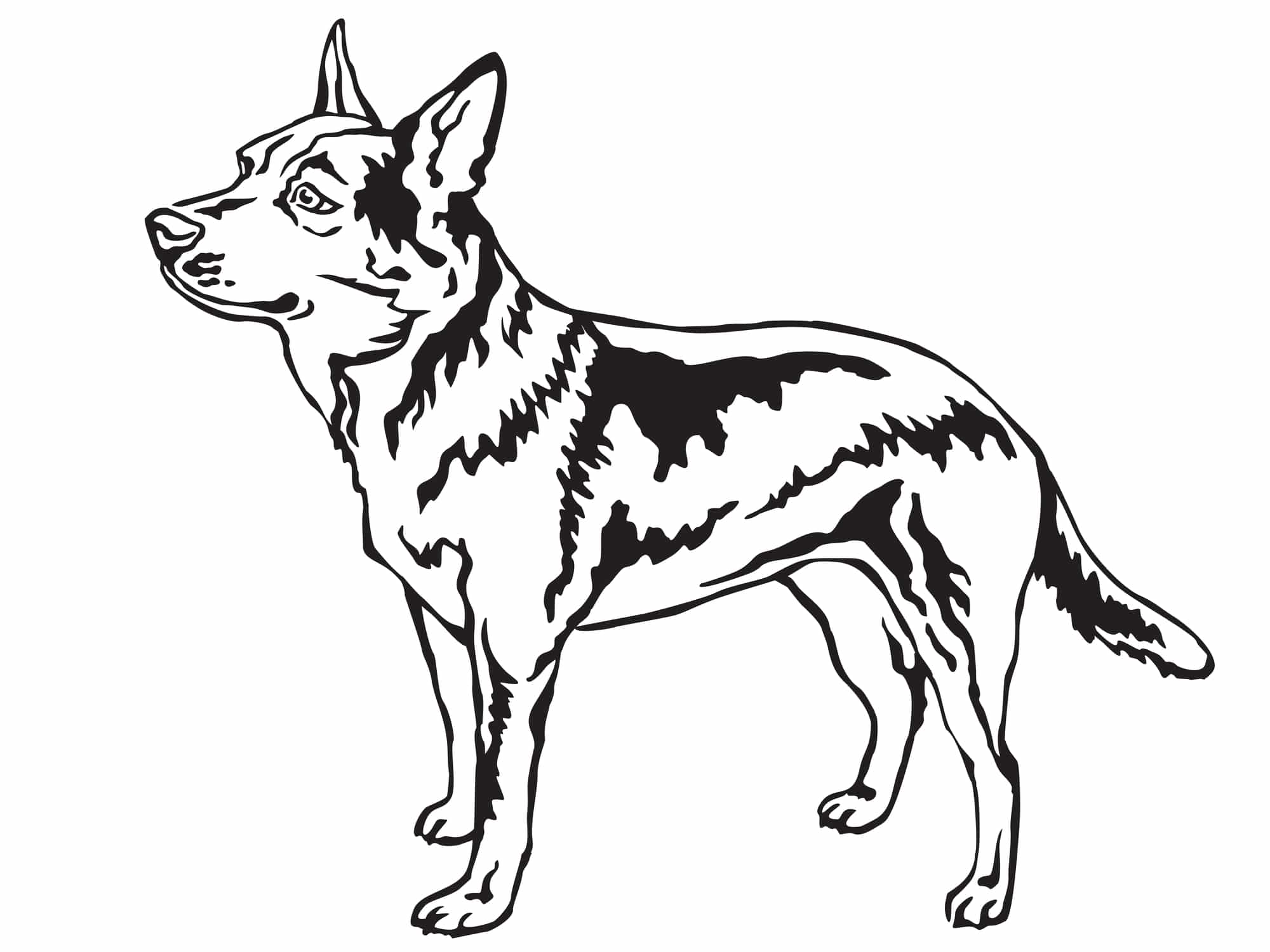
Origin & History
The first Australian settlers bred the pedigree dog. It was preferably used to herd the large herds of cattle. In 1830, cattle breeder Thomas Hall brought blue working dogs to Australia. He bought the so-called Drover Dogs from drovers in northern England.
Hall started crossbreeding again. He crossed the native Dingo with the Hall's Heeler breed. Later, genes from the Bull Terrier, Kelpie and Dalmatian were added.
The result was an extremely robust and agile working dog. It was able to drive the semi-wild cattle herds of Australia for miles. And this under the most difficult climatic and scenic conditions.
In the 19th century, the Australian Cattle Dog developed into the most important cattle dog breed on the Australian continent. In 1897, the blue breed (Blue Merle) took part in a dog show for the first time. In 1903, the breeder Robert Kaleski named the first breed standard.
In 1979, the FCI became aware of the Cattle Dog. The federation included it in the register of pedigree dogs. It was included in Group 1 "Herding and driving dogs" and there in Section 2 "Driving dogs".
